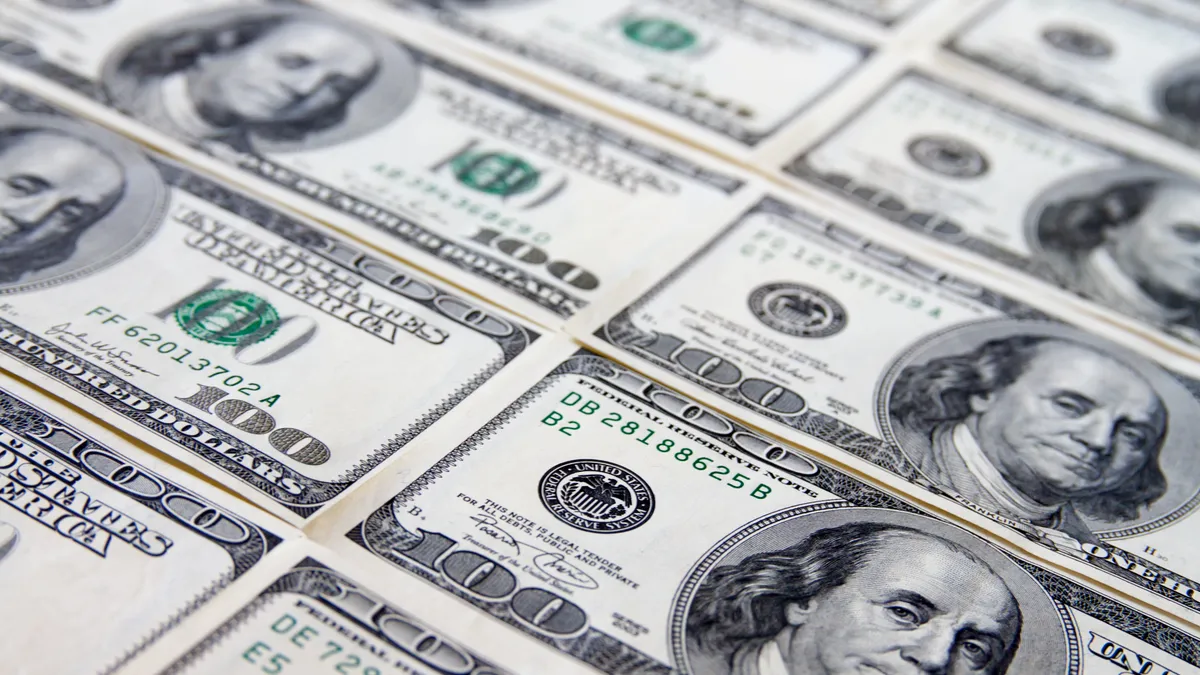Dive Brief:
- Lawmakers are hammering out the details of a second major coronavirus aid package. The latest proposal would provide colleges with $20 billion in relief funding.
- Of that money, $17 billion would go directly to individual institutions, which would have to spend at least half of their allotments on student financial aid. The sector has been pressing lawmakers for more relief as schools' revenue streams diminish and state funding is cut.
- Lawmakers hope to come to an agreement on the latest round of funding in the coming days.
Dive Insight:
Higher education hasn't seen relief funding since March, when President Donald Trump signed the Coronavirus Aid, Relief and Economic Security (CARES) Act, giving $14 billion to the sector.
Since then, colleges' budgetary pressures have escalated, with enrollment widely down and state funding likely to shrink in the coming fiscal year. The American Council on Education wrote to Congressional leaders multiple times, asking for at least $120 billion.
The new proposal comes from a bipartisan group of lawmakers. It is reportedly meant to serve as a template for relief talks, which have been ongoing among Congressional leaders for days. Lawmakers are on a tight turnaround to pass a relief bill, which they intend to package with a bigger spending bill. Congress must approve that larger budget measure, or another short-term option, by Friday to avoid a government shutdown.
The latest bill changes the formula for figuring out how much aid institutions get. The CARES Act distributed money based on how many full-time students a college enrolls, weighted heavily toward how many receive the federal Pell Grant.
The new bill factors in colleges' part-time student counts, again with an emphasis on those getting the Pell Grant. This would ensure two-year colleges, which enroll many part-time students, would receive more money than they did from the CARES Act.
How much each college will receive will be weighted as follows:
- 37.5% based on full-time Pell Grant enrollment.
- 37.5% based on total Pell enrollment.
- 12.5% based on non-Pell, full-time enrollment.
- 12.5% based on total non-Pell enrollment.
The calculation excludes students who were enrolled exclusively in distance education courses prior to "a qualifying emergency," which includes the pandemic.
The bill also sets aside $2 billion largely for historically Black colleges and other minority-serving institutions, as well as $1 billion for schools with significant unmet needs related to the pandemic.
It also cuts allocations for wealthy colleges — which it counts as those subject to the so-called "endowment tax" — by 50%. Private institutions with at least 500 tuition-paying students and assets of at least $500,000 per student have a 1.4% excise tax imposed on their net investment income.
Trump and Education Secretary Betsy DeVos railed against these institutions while the CARES money was being distributed, leading several to decline their portion.
Absent is a provision included in the CARES Act that directed the U.S. Department of Education to prioritize giving extra funding to schools that did not receive at least $500,000. The department topped off these schools' CARES allocations to reach $500,000, spurring controversy as some of them far exceeded their usual budgets.
The proposal would also extend student loan forbearance until April 1, 2021.















